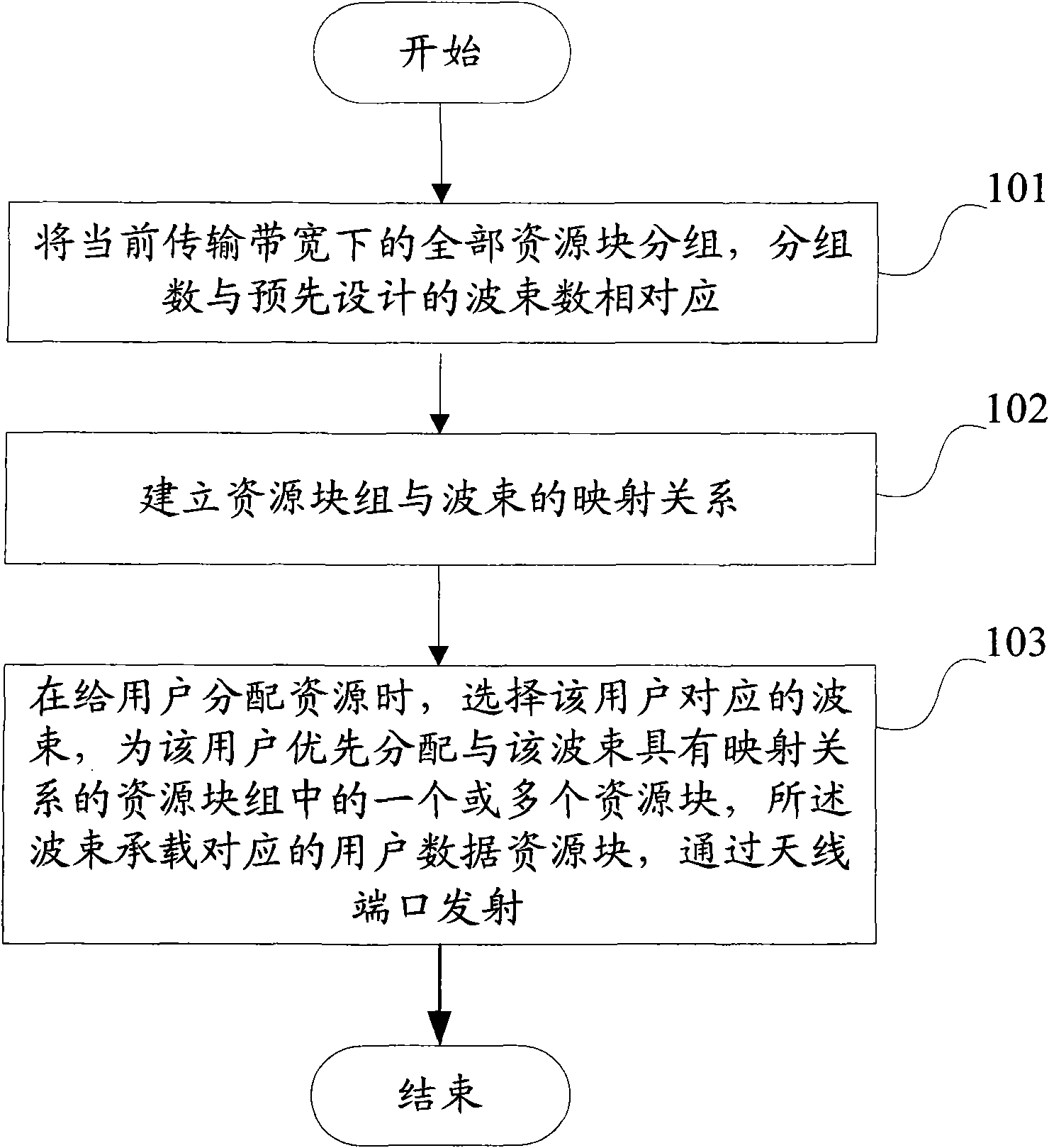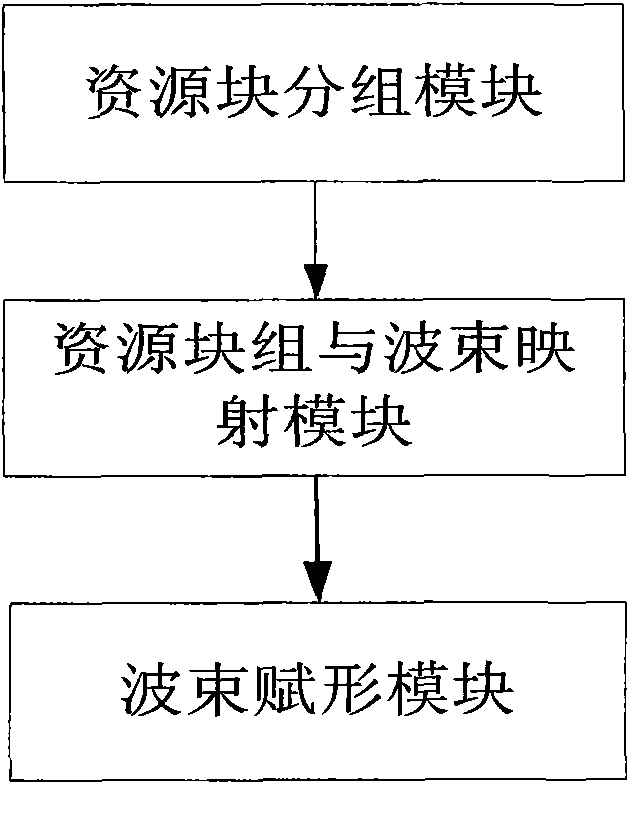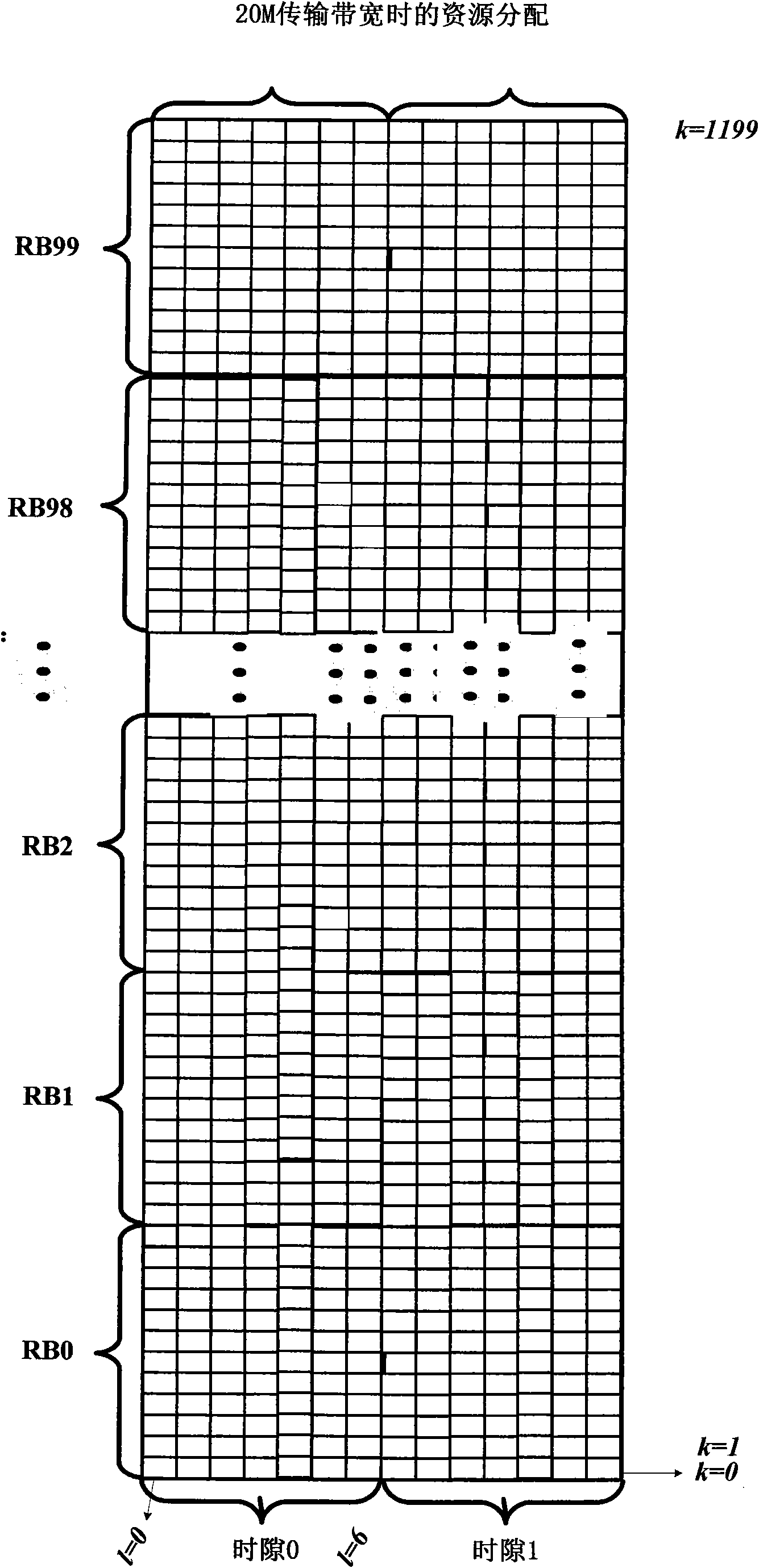Resource block grouping and beam forming method and device
A resource block group and beamforming technology, applied in frequency diversity, space transmit diversity, diversity/multi-antenna systems, etc., can solve problems such as co-channel interference, and achieve the effect of reducing co-channel interference
- Summary
- Abstract
- Description
- Claims
- Application Information
AI Technical Summary
Problems solved by technology
Method used
Image
Examples
Embodiment Construction
[0035] The present invention combines resource block grouping and beam selection to design beamforming methods for LTE and LTE-Advanced systems with multiple antennas, that is, to group resource blocks according to certain rules and form corresponding mapping relationships with pre-optimized and designed beams. Different resources The blocks correspond to different beam numbers, and then beamforming is performed. Compared with the traditional random resource block beamforming method, this beamforming method can ensure that different users of two adjacent cells at the edge of the cell are preferentially allocated to different resources. block, thereby effectively reducing inter-cell co-channel interference.
[0036] The present invention will be described in detail below in conjunction with the accompanying drawings and specific embodiments.
[0037] Such as figure 1 As shown, the method of the embodiment of the present invention includes the following steps:
[0038] Step 10...
PUM
 Login to View More
Login to View More Abstract
Description
Claims
Application Information
 Login to View More
Login to View More - R&D
- Intellectual Property
- Life Sciences
- Materials
- Tech Scout
- Unparalleled Data Quality
- Higher Quality Content
- 60% Fewer Hallucinations
Browse by: Latest US Patents, China's latest patents, Technical Efficacy Thesaurus, Application Domain, Technology Topic, Popular Technical Reports.
© 2025 PatSnap. All rights reserved.Legal|Privacy policy|Modern Slavery Act Transparency Statement|Sitemap|About US| Contact US: help@patsnap.com



